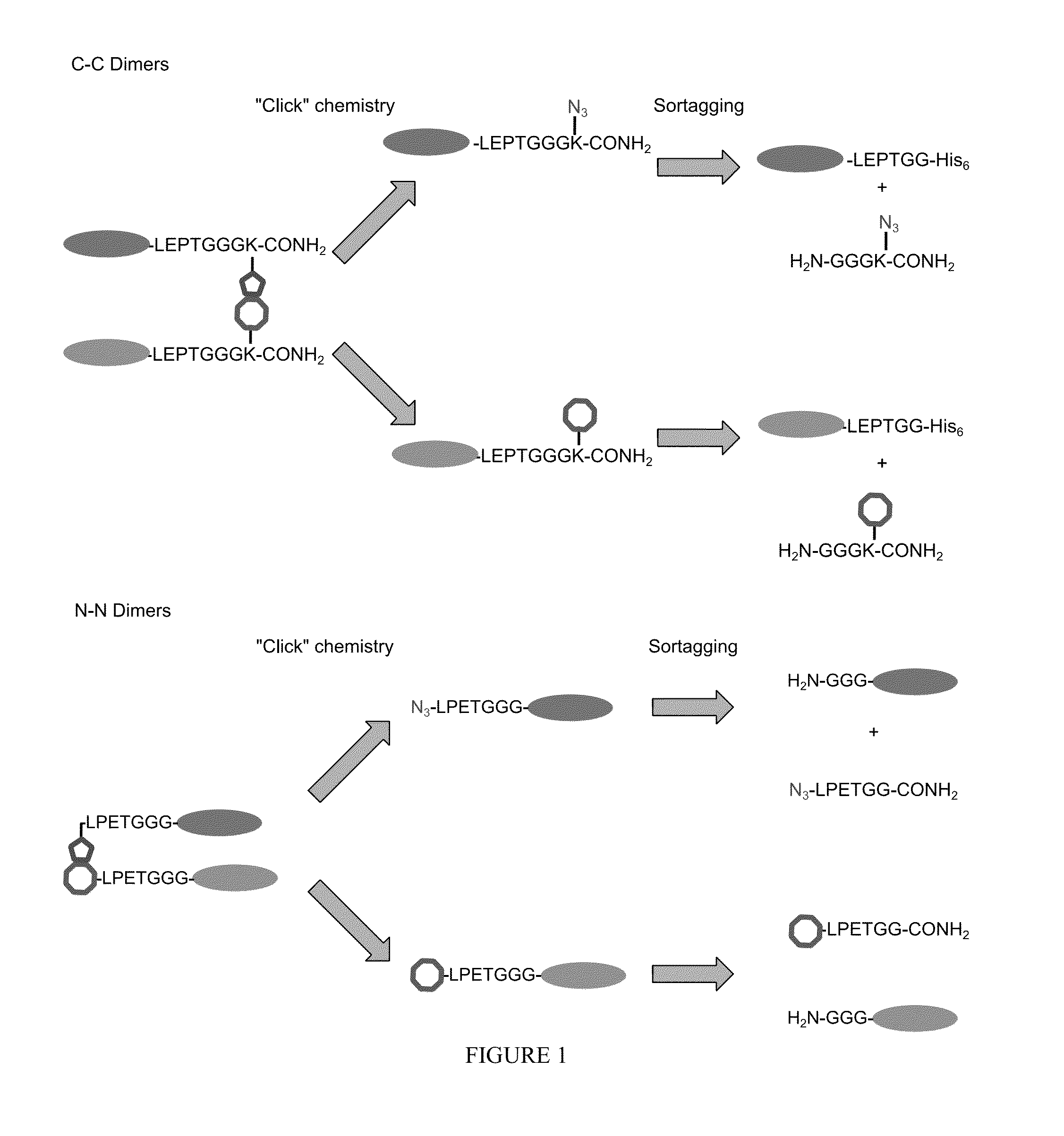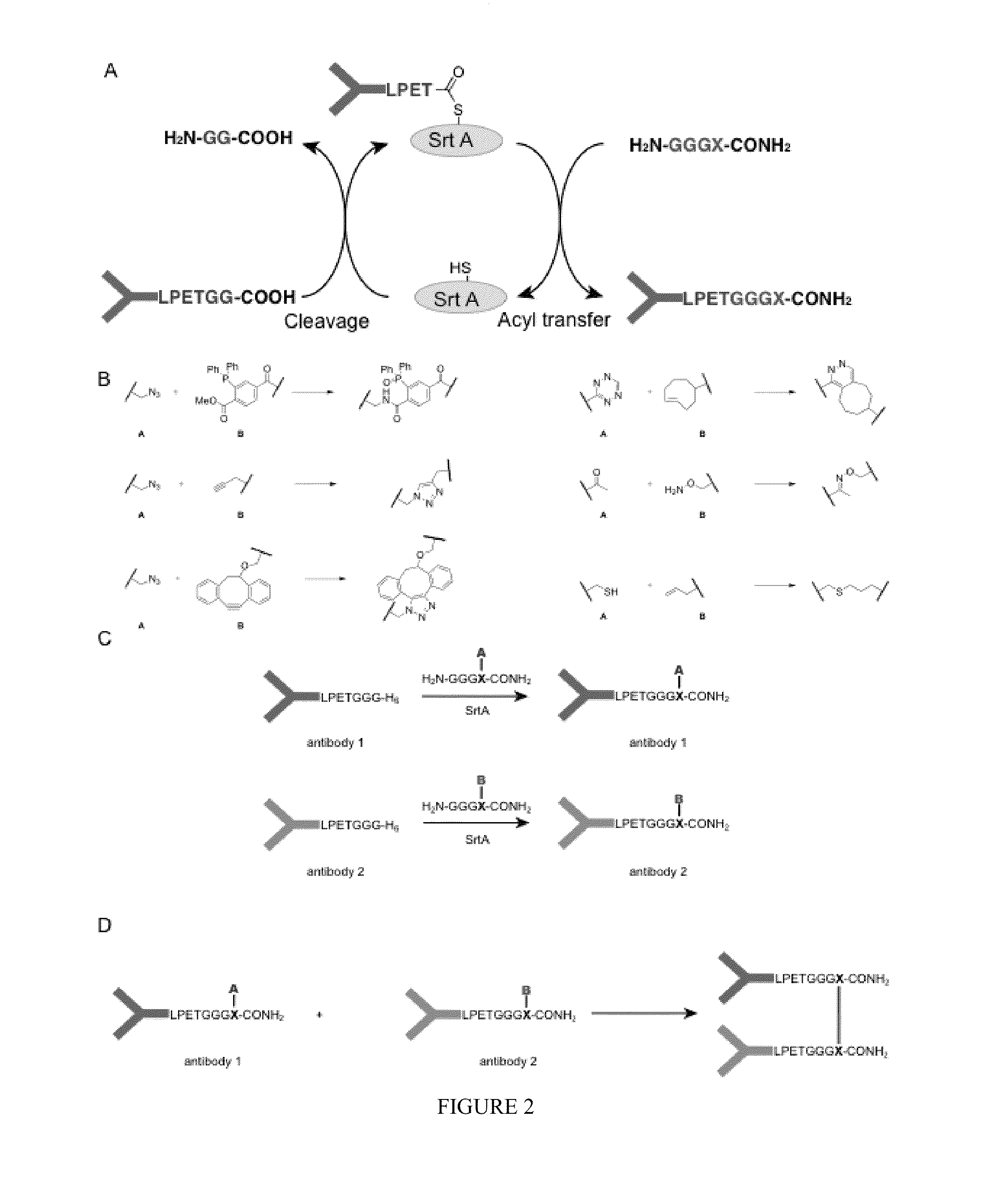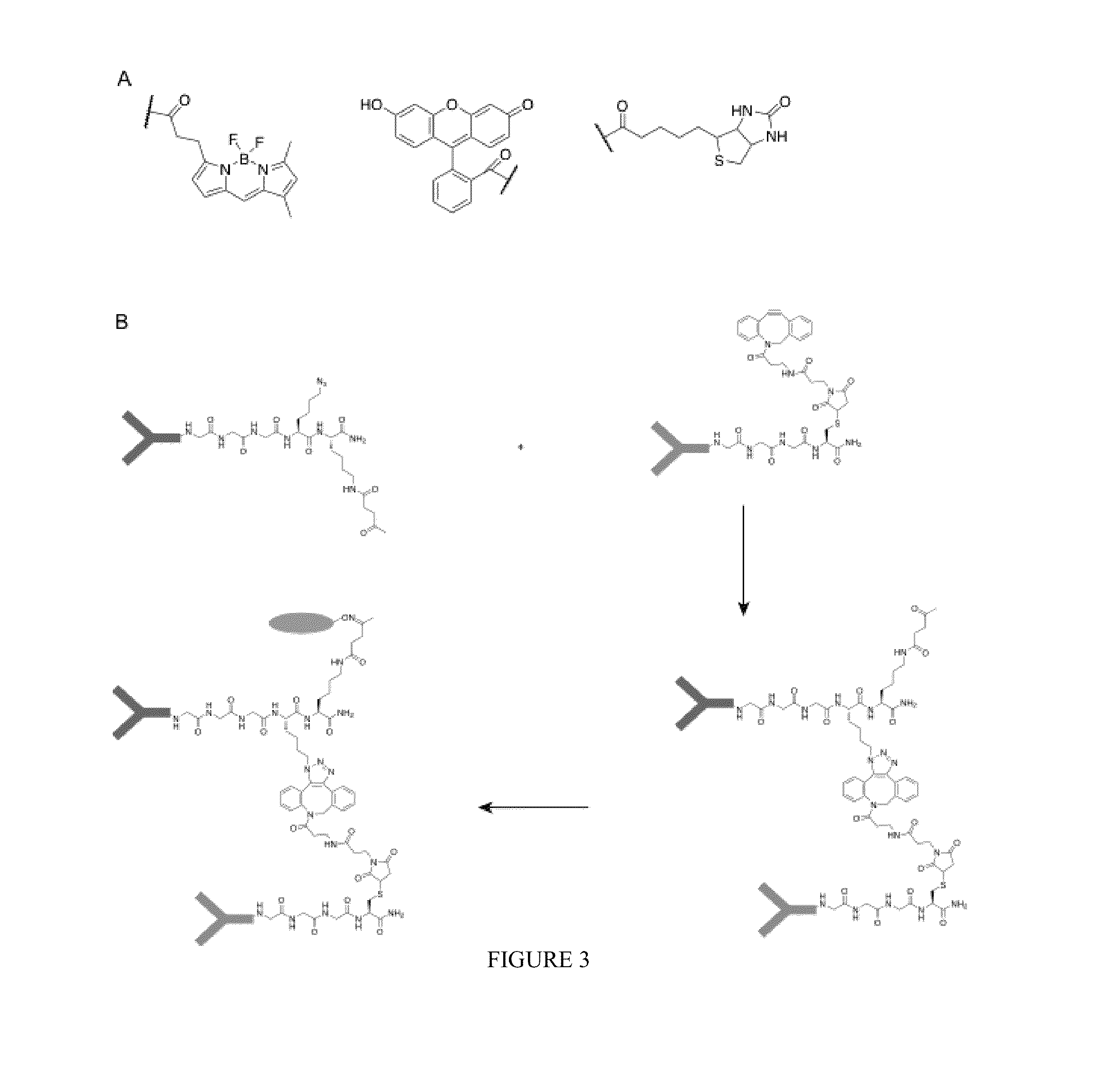Sortase-modified vhh domains and uses thereof
a technology of vhh domains and vhh proteins, applied in the field of vhh domains modified by vhh proteins, can solve the problems of limiting the application of protein ligation and difficult preparation of many proteins
- Summary
- Abstract
- Description
- Claims
- Application Information
AI Technical Summary
Benefits of technology
Problems solved by technology
Method used
Image
Examples
example 1
Production of N-to-N and C-to-C Protein Fusions Created by Combining Click Chemistry with a Sortase-Catalyzed Transacylation
[0398]Protein fusions are useful tools in biochemistry. Using genetic constructs, a large variety of proteins fused to GFP have been expressed. One major disadvantage of protein fusion technology is, however, that only C-to-N linked protein fusions can be achieved, in which the C-terminus of one protein is fused to the N-terminus of another protein. This limits the scope of such protein fusions to those that do not require an unoccupied, or unfused N- or C-terminus. For example, the N-terminus of antibodies is required for antigen recognition and therefore bispecific antibodies cannot be produced using conventional recombinant technologies, including protein fusion techniques. Other proteins, such as ubiquitin, require an unmodified C-terminus for normal activity.
[0399]Some aspects of this invention provide methods and reagents for the preparation of N-to-N and...
example 2
Installation of Non-Click Functionalities Via Sortase Reaction
[0407]The functionalities that can be incorporated in the nucleophiles for the sortase reaction are not limited to click chemistry handles. Sortase nucleophiles may be equipped with any of the functionalities that previously have been used in the sortase reaction (FIG. 3A). For example, in some embodiments, biotin is incorporated, which allows for visualization, purification and tetramerization of the modified protein, e.g., the sortase-modified antibody, using streptavidin. In some embodiments, a fluorophore is incorporated, for example, a fluorescent protein, or a fluorescent moiety, which allows for visualization of protein dimers. Especially for bispecific antibodies, this is a useful feature allowing them to be used in FACS and microscopy experiments. Moreover, combinations of compatible click handles may be used for the synthesis of even more complex structures, such as protein trimers, and PEGylated protein dimers ...
example 3
Generation of Bi-Specific, Chimeric Antibodies
[0409]An exemplary strategy of sortase-mediated installation of click chemistry handles was applied to generate bispecific antibody fragments based on the use of the VHH domains typical of camelid antibodies. Unlike other mammalian species, camelids possess an additional class of antibodies whose binding site is constructed from a VH domain only. These domains can be expressed in bacteria as so-called nanobodies. Their small size and ease of manipulation make them attractive targets for the construction of therapeutics. Especially the ability to combine two distinct recognition specificities in a single reagent holds promise for the construction of so called bi-specific antibodies.
[0410]VHH fragments were expressed in E. coli as nanobodies. The VHH fragments were based on an antibody raised in vicuna against GFP and an antibody raised in llama against 2-microglobulin. Both nanobodies were equipped with an LPXTG motif to prepare them for ...
PUM
| Property | Measurement | Unit |
|---|---|---|
| chemical moiety | aaaaa | aaaaa |
| molecular weight | aaaaa | aaaaa |
| size exclusion chromatography | aaaaa | aaaaa |
Abstract
Description
Claims
Application Information
 Login to View More
Login to View More - R&D
- Intellectual Property
- Life Sciences
- Materials
- Tech Scout
- Unparalleled Data Quality
- Higher Quality Content
- 60% Fewer Hallucinations
Browse by: Latest US Patents, China's latest patents, Technical Efficacy Thesaurus, Application Domain, Technology Topic, Popular Technical Reports.
© 2025 PatSnap. All rights reserved.Legal|Privacy policy|Modern Slavery Act Transparency Statement|Sitemap|About US| Contact US: help@patsnap.com



